Best Practices Articles

The Essential Guide to Partner Relationship Management (PRM) for Small Manufacturing
For small manufacturing businesses, the growth path isn't just paved with innovative products and efficient production lines; it's built on the strength of their indirect sales channels. Your network of dealers, distributors, manufacturers' reps, and resellers is your boots on the ground, brand ambassadors, and primary engine for revenue. Yet, for companies with fewer than 100 employees, managing this vital network can feel like a chaotic, all-consuming task. Juggling spreadsheets, endless email chains, and a patchwork of disconnected tools creates friction, wastes precious time, and ultimately limits your growth potential. This is where a strategic approach to partner relationship management (PRM) becomes a game-changer.
Effective partner relationship management is more than just software; it's a business philosophy and a strategic framework for recruiting, enabling, managing, and growing your channel partners. It’s about transforming a loose collection of independent sellers into a high-performing, loyal, and engaged ecosystem that validly extends your team. Mastering partner relationship management is the key to unlocking scalable, predictable channel revenue for the ambitious Channel Manager or Business Owner in a small manufacturing firm. This definitive guide will walk you through everything you need to know. We’ll demystify what PRM truly is, illustrate why it’s mission-critical for your business, and provide a detailed, step-by-step roadmap for implementing a successful partner relationship management strategy that drives real-world results.
What is Partner Relationship Management and Why is it Critical for Small Manufacturing?
Partner relationship management (PRM) is the comprehensive methodology, supported by processes and technology, that a company uses to streamline business processes with its indirect sales partners. At its core, PRM is about making it as easy as possible for your partners to do business with you. While a Customer Relationship Management (CRM) system is focused on your direct customers, a PRM system is purpose-built for the unique lifecycle of a channel partner. For a small manufacturer, this distinction is crucial. Your "customer" in a PRM context is your partner. The goal is to provide them with such an exceptional experience—from onboarding and training to lead management and marketing support—that they are motivated and equipped to prioritize selling your products over your competitors'.
A robust PRM strategy, often powered by channel partner software, is the central nervous system for your entire channel operation. Imagine your top-performing dealer in another state. How do they access your latest product spec sheets? How do they register a new sales lead to ensure they get credit? How do they request co-op marketing funds for a local trade show? Without a PRM system, each action likely involves a manual email, a phone call, or a search through a disorganized shared drive. This creates delays, frustrations, and opportunities for error. With a PRM system, they log into a single, branded partner portal and have every tool and piece of information they need at their fingertips, 24/7. This is the fundamental shift from channel administration to true channel enablement.
The Core Benefits of a Formal PRM Strategy
Adopting a structured approach to partner relationship management provides tangible benefits that directly impact a small manufacturer's bottom line and competitive standing.
- Increased Channel Sales and Revenue: This is the ultimate goal. By providing partners with faster access to leads, better training on your products, and practical marketing tools, you directly empower them to sell more. A PRM system removes friction from the sales process, allowing partners to spend less time on administration and more time in front of customers.
- Enhanced Partner Engagement and Loyalty: Partners, like customers, value ease of business. When you provide them with a professional, intuitive platform and proactively support their efforts, you build loyalty. An engaged partner is more likely to lead with your products, invest their resources in marketing your brand, and provide valuable feedback from the front lines. This is the essence of effective dealer relationship management.
- Improved Operational Efficiency: Time is the most valuable resource for a small internal team. A PRM strategy automates dozens of manual, time-consuming tasks: onboarding, lead distribution, MDF/Co-op management, and reporting. This automation frees your channel manager to focus on high-value activities like strategic recruitment and joint business planning with top-tier partners.
- Greater Visibility and Actionable Insights: One of the biggest challenges in channel sales is a lack of visibility. What is the actual state of your pipeline? Which partners are your top performers, and which are lagging? Which marketing campaigns are generating ROI? A PRM platform centralizes this data, providing a single source of truth. With clear dashboards and analytics, you can make data-driven decisions to optimize your channel, identify problems before they escalate, and understand the true ROI of your affordable PRM investment.
- Consistent Branding and Messaging: In a channel model, your partners are the face of your brand. A PRM system ensures dealers and distributors can access the latest, approved marketing materials, product information, and pricing. This prevents partners from using outdated logos or incorrect product specs, ensuring a consistent and professional brand experience for the end customer, no matter who they buy from. You may not be able to outspend a small manufacturer competing against larger players, but you can outperform them by being a better partner. A world-class partner experience, powered by a smart PRM strategy, is your ultimate competitive advantage.
Implementing a Partner Relationship Management Strategy in Your Business
Transitioning from an ad-hoc, manual approach to a structured partner relationship management strategy can seem monumental. Still, it's a journey that can be broken down into manageable, logical steps. Following this framework will ensure a smooth and successful implementation that gains buy-in from your internal team and valued partners.
- Step 1 - Assess Your Current State and Define Your "Why": Before you can build your future state, you must honestly understand your present. Gather your team and thoroughly audit your current channel management processes.
Map the Partner Journey: Document every touchpoint a partner has with your company, from their first inquiry about joining your network to closing a deal and getting paid. Identify every point of friction, every manual workaround, and every bottleneck.
Interview Your Partners: Select a cross-section of your partners—your best performers, average dealers, and even a few less engaged. Ask them directly: What are your biggest frustrations when working with us? What could we do to make it easier for you to sell our products? Their feedback is pure gold.
Identify Key Pain Points: Consolidate your findings. Are leads falling through the cracks? Is it impossible to track MDF spending? Do partners constantly complain that they can't find the proper documents? Prioritize the top 3-5 problems a PRM strategy needs to solve.
Define Your Goals: Establish clear, measurable goals based on these pain points. These shouldn't be vague aspirations like "improve partner relationships". They should be specific business objectives, such as: "Reduce partner onboarding time from 2 weeks to 3 days", "Increase partner-registered leads by 40% in the next 12 months", "Achieve a 90% partner satisfaction score with our new support process", or "Decrease time spent on channel administration by 15 hours per week". This initial step is the most critical. It builds the business case for your PRM initiative and ensures that your strategy is grounded in solving real-world problems.
- Step 2 - Design Your Partner Program and Processes: With your goals defined, you can now design (or redesign) the structure of your partner program. A PRM system is a tool; it works best when automating well-defined processes.
Partner Tiers & Requirements: If you don't already have them, consider creating partner tiers (e.g., Platinum, Gold, Silver). Define the requirements for each tier (e.g., revenue targets, technical certifications) and the corresponding benefits (e.g., higher margins, more MDF, priority lead access). This incentivizes performance and creates a clear path for partner growth.
Rules of Engagement: Create a clear, concise document outlining the rules of engagement. This should cover your lead registration policy (e.g., what constitutes a valid lead, how long a partner has to work it), your MDF guidelines, and your code of conduct. Clarity here prevents channel conflict down the line.
Process Workflows: Map out the ideal workflows for your key processes. For example, a new lead enters the system from the website for lead distribution. The system automatically checks the lead's geographic location (zip code). It then identifies all certified "Gold" and "Platinum" partners in that territory. The lead is automatically assigned to the highest-tiered partner with the fastest average lead follow-up time. The partner receives an instant email and SMS notification. Defining these ideal workflows on paper first makes configuring your channel partner software easier.
- Step 3 - Select the Right PRM Software Platform: You can evaluate technology now that you have a clear strategy and defined processes. For PRM for small manufacturing, the key is finding a powerful, affordable, and scalable platform.
Identify Must-Have Features: Based on your goals from Step 1, create a checklist of non-negotiable features. This will likely include: a secure, brandable Partner Portal, Content Management (for spec sheets, price lists, etc.), Lead Distribution and Deal Registration, MDF/Co-op Funds Management, a simple Learning Management System (LMS) for training and certification, and robust Analytics and Reporting Dashboards.
Prioritize Ease of Use: The most powerful platform in the world is useless if your partners refuse to use it. The user interface for your internal team and external partners must be intuitive and straightforward.
Evaluate Integration Capabilities: Your PRM platform needs to communicate with your other business systems, most notably your CRM. Seamless integration ensures a smooth flow of data and prevents the creation of information silos.
Consider Scalability and Modularity: As a small business, you may not need every advanced feature on day one. Look for a modular platform like ZINFI's. This allows you to start with the core PRM functionality you need now and add more advanced modules, like Through-Channel Marketing Automation (TCMA), as your program matures and your business grows. This approach ensures the platform grows with you.
Request Personalized Demos: Don't settle for canned video tours. Schedule live demos with your top 2-3 vendors. Come prepared with specific use-case scenarios relevant to your manufacturing business and ask them to show you exactly how their platform would handle them.
- Step 4 - Plan for a Phased Rollout and Partner Onboarding: A "big bang" launch where you switch on the new system for all partners simultaneously can be risky. A phased approach is generally more successful and less disruptive.
Launch with a Pilot Group: Select a small group of 5-10 of your most engaged and tech-savvy partners to be part of a pilot program. This allows you to introduce the system in a controlled environment. These partners will provide invaluable feedback and help you iron out any wrinkles in your processes before the full launch. They will also become your biggest advocates and "champions" to the rest of the network.
Develop a Communication Plan: You cannot over-communicate during this transition. Weeks before the launch, begin teasing the new partner portal. Explain the "why" behind the change, focusing on the benefits to them ("What's In It For Me?"). Highlight features like instant lead notifications, 24/7 access to marketing materials, and a streamlined claims process.
Create Comprehensive Training Resources: Cater to different learning styles. Host live training webinars, record them for on-demand viewing, and create a library of short, task-based "how-to" videos (e.g., "How to Register a Deal," "How to Submit an MDF Claim"). Also, create simple, quick-start guides in PDF format. A well-planned dealer onboarding process is critical for success.
Migrate Clean Data: Use this opportunity to clean up your partner data. Ensure all contacts are current, company profiles are accurate, and contracts are up-to-date before migrating the information into the new PRM system.
- Step 5 - Launch, Measure, and Optimize: Once you've completed your pilot program and are ready for the full launch, your work isn't over; it's just beginning. The key to long-term success is to measure performance against your goals and optimize your strategy continuously.
Track Key Performance Indicators (KPIs): Monitor the KPIs you established in Step 1. Your PRM dashboard should give you an at-a-glance view of: Adoption & Engagement Metrics (Portal login rates, frequency of logins, content downloads), Sales & Pipeline Metrics (Number of deals registered, pipeline value, lead conversion rates, sales cycle length), and Marketing Metrics (MDF utilization rate, campaign engagement, marketing-sourced leads).
Gather Ongoing Feedback: Create a permanent feedback mechanism within your partner portal. Conduct short, regular surveys to gauge partner satisfaction and identify areas for improvement.
Iterate and Evolve: Your channel strategy shouldn't be static. Use the insights from your PRM analytics and partner feedback to refine your programs continuously. Perhaps you notice that partners who complete a specific training module have a 20% higher close rate—this is an insight you can use to make that training mandatory. Maybe a marketing campaign consistently delivers high-quality leads—you can create more "campaigns-in-a-box" based on that successful model. By treating partner relationship management as a continuous cycle of planning, execution, and optimization, you make a dynamic and resilient channel ecosystem that drives sustainable growth for your manufacturing business.
Ready to build a world-class channel program?
Frequently Asked Questions (FAQ)
- What is the main difference between CRM and PRM?
The main difference lies in the end-user. A CRM (Customer Relationship Management) is built to manage relationships with your direct end-customers. Your internal sales, marketing, and service teams use it to track leads, manage the sales pipeline, and handle customer service issues. A PRM (Partner Relationship Management) system is built to manage relationships with your indirect sales partners (dealers, distributors, etc.). It’s a tool you provide to your partners to help them sell more effectively on your behalf. - We are a very small manufacturer. Is PRM software too complex or expensive for us?
Not at all. While PRM was once the domain of large enterprises, modern cloud-based channel partner software is designed to be scalable and affordable for small businesses. Look for modular platforms that allow you to start with core functionalities like a partner portal and deal registration, and then add more advanced features as you grow. The efficiency gains and sales uplift from a PRM system typically provide a very rapid return on investment. - How can a PRM strategy help with dealer recruitment?
A well-run PRM program is a powerful recruitment tool. When talking to a prospective dealer, showcasing a professional, easy-to-use partner portal demonstrates a high commitment to your partners' success. It shows you're organized, supportive, and easy to do business with—a significant competitive advantage when that dealer is deciding which product lines to carry. - How long does implementing a partner relationship management system take?
Implementation time varies depending on the platform's complexity and the cleanliness of your data, but it's faster than many think. For a small manufacturer using a phased approach, a pilot group can often be up and running in just a few weeks. A full rollout might take 60-90 days. The key is choosing a vendor with a structured, guided onboarding process. - What is the single most crucial benefit of PRM for a small manufacturing company?
While there are many benefits, the single most important one is leverage. As a small business, your internal resources are limited. An effective partner relationship management strategy, powered by the right technology, allows you to leverage the full potential of your partner network, turning them into a scalable, highly effective sales and marketing force that you couldn't afford to build in-house. It allows you to punch far above your weight.
Best Practices Guidebook
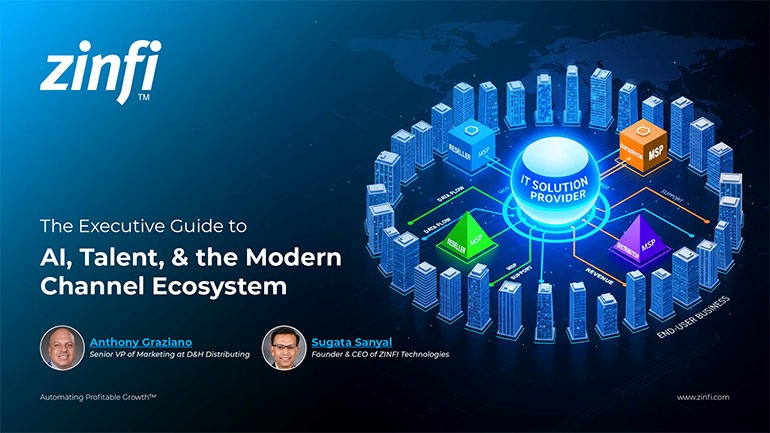 Modernizing Channel Marketing: AI and Ecosystem Enablement Best Practices
Modernizing Channel Marketing: AI and Ecosystem Enablement Best PracticesDownload for FREE
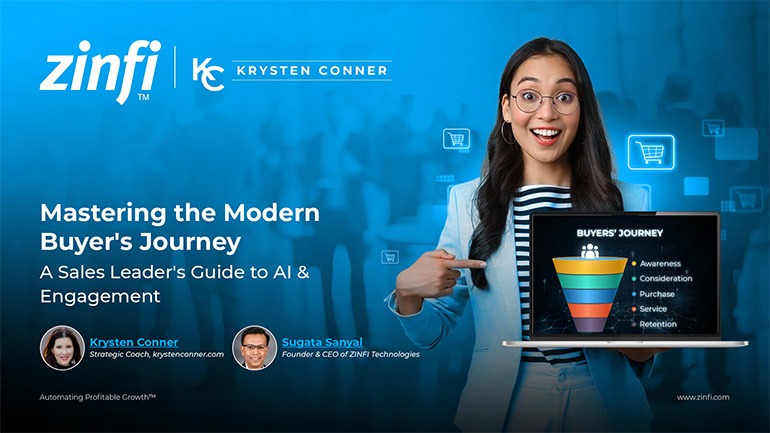 The Channel’s Shift to Partner-Led With AI Best Practices
The Channel’s Shift to Partner-Led With AI Best PracticesDownload for FREE
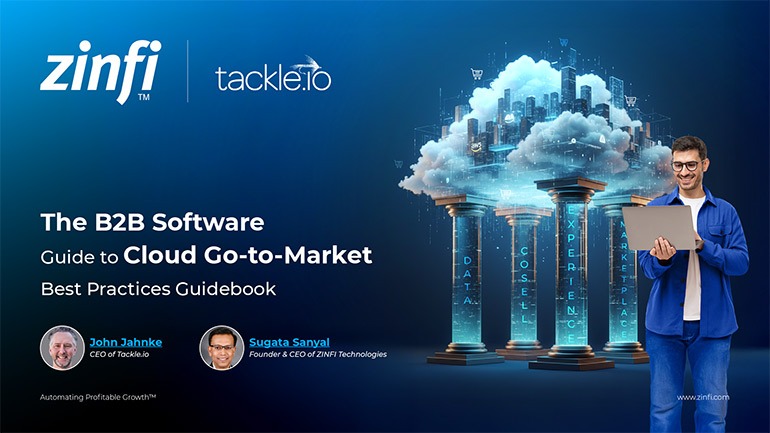 Hyperscalers, ISVs, and AI: Shaping the Future of B2B Software Distribution
Hyperscalers, ISVs, and AI: Shaping the Future of B2B Software DistributionDownload for FREE
 Definitive Guide to a Partner Ecosystem-First Sales Strategy
Definitive Guide to a Partner Ecosystem-First Sales StrategyDownload for FREE
 The Partner-Led Digital and AI Transformation Best Practices
The Partner-Led Digital and AI Transformation Best PracticesDownload for FREE
 Startup Talent Recruitment: Hiring Missionaries, Not Mercenaries
Startup Talent Recruitment: Hiring Missionaries, Not MercenariesDownload for FREE
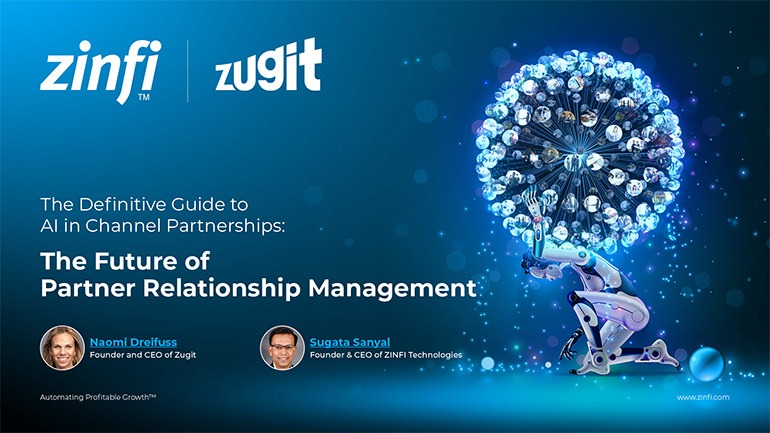 The Future of Partner Relationship Management with AI in Partnerships
The Future of Partner Relationship Management with AI in PartnershipsDownload for FREE
 Cybersecurity for the 99%: Strategies from the Frontline
Cybersecurity for the 99%: Strategies from the FrontlineDownload for FREE
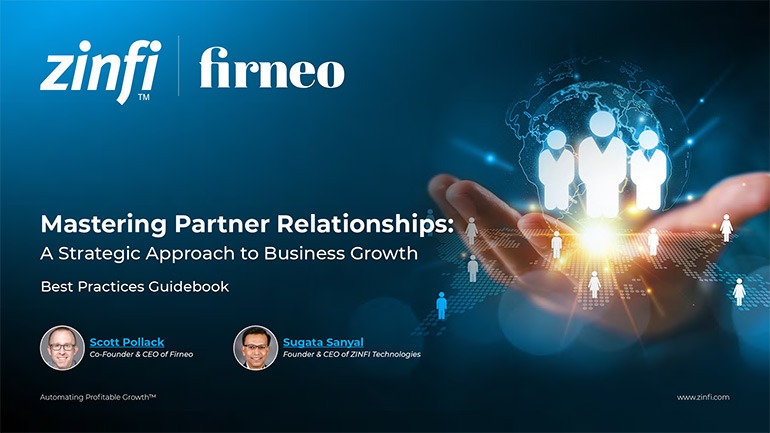 Mastering Partner Relationships: A Strategic Approach to Business Growth
Mastering Partner Relationships: A Strategic Approach to Business GrowthDownload for FREE
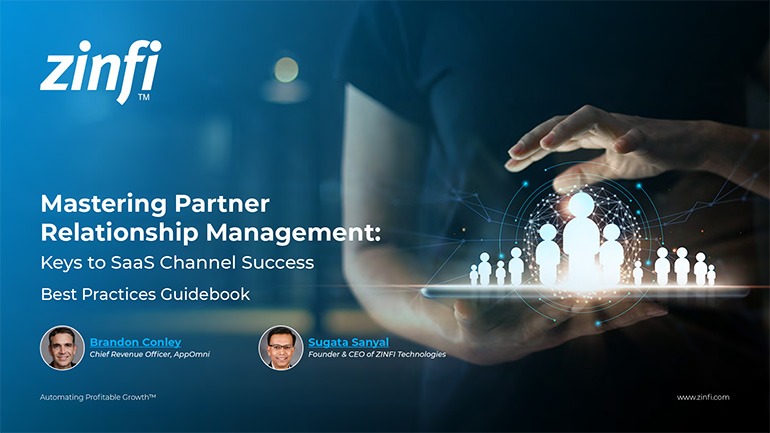 Mastering Partner Relationship Management: Keys to SaaS Channel Success
Mastering Partner Relationship Management: Keys to SaaS Channel SuccessDownload for FREE
 Navigating the AI Revolution: Guide for Partners in the Microsoft Ecosystem
Navigating the AI Revolution: Guide for Partners in the Microsoft EcosystemDownload for FREE
 Mastering the Modern Buyers Journey: Sales Leader’s Guide to AI & Engagement
Mastering the Modern Buyers Journey: Sales Leader’s Guide to AI & EngagementDownload for FREE










